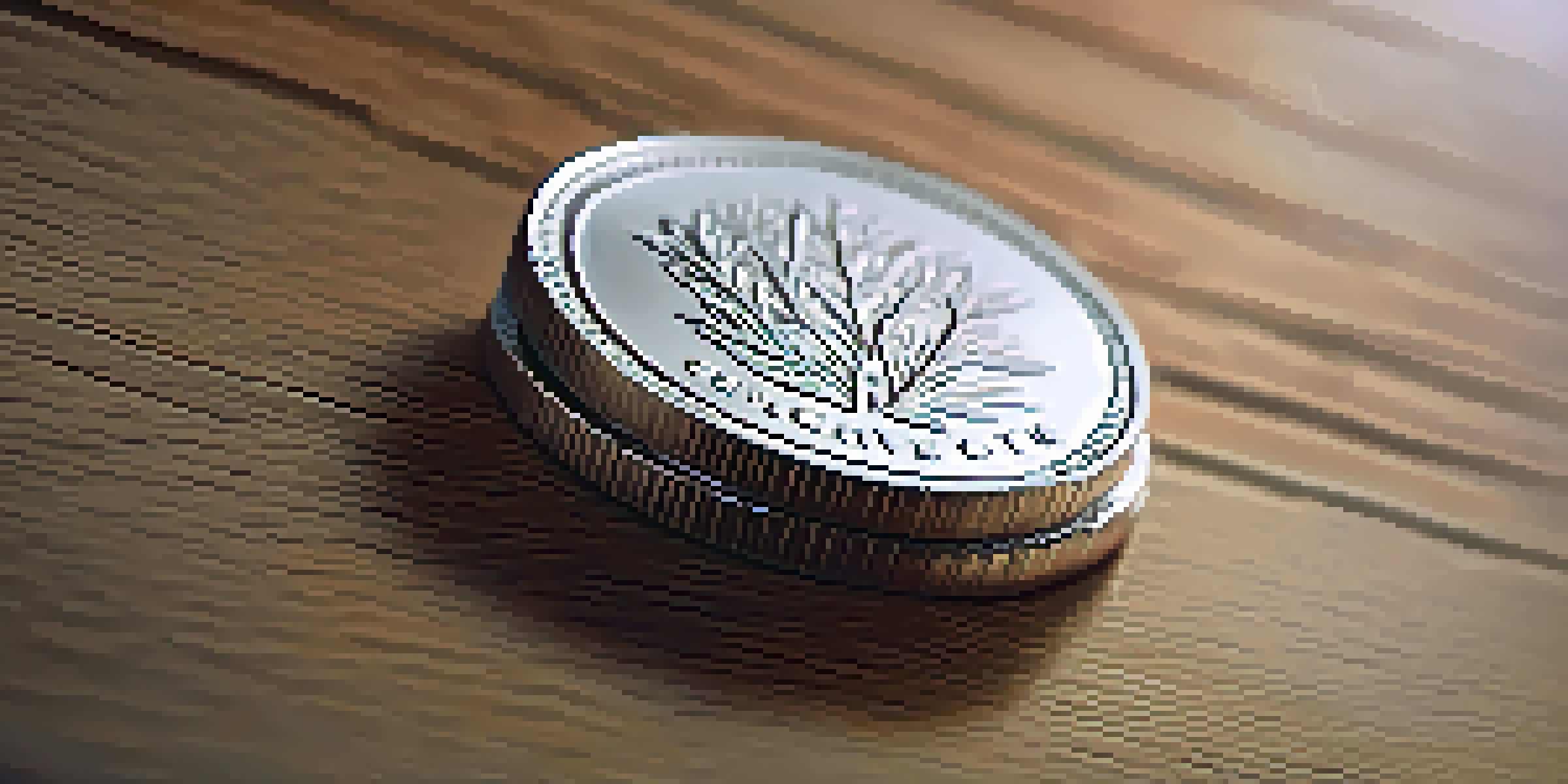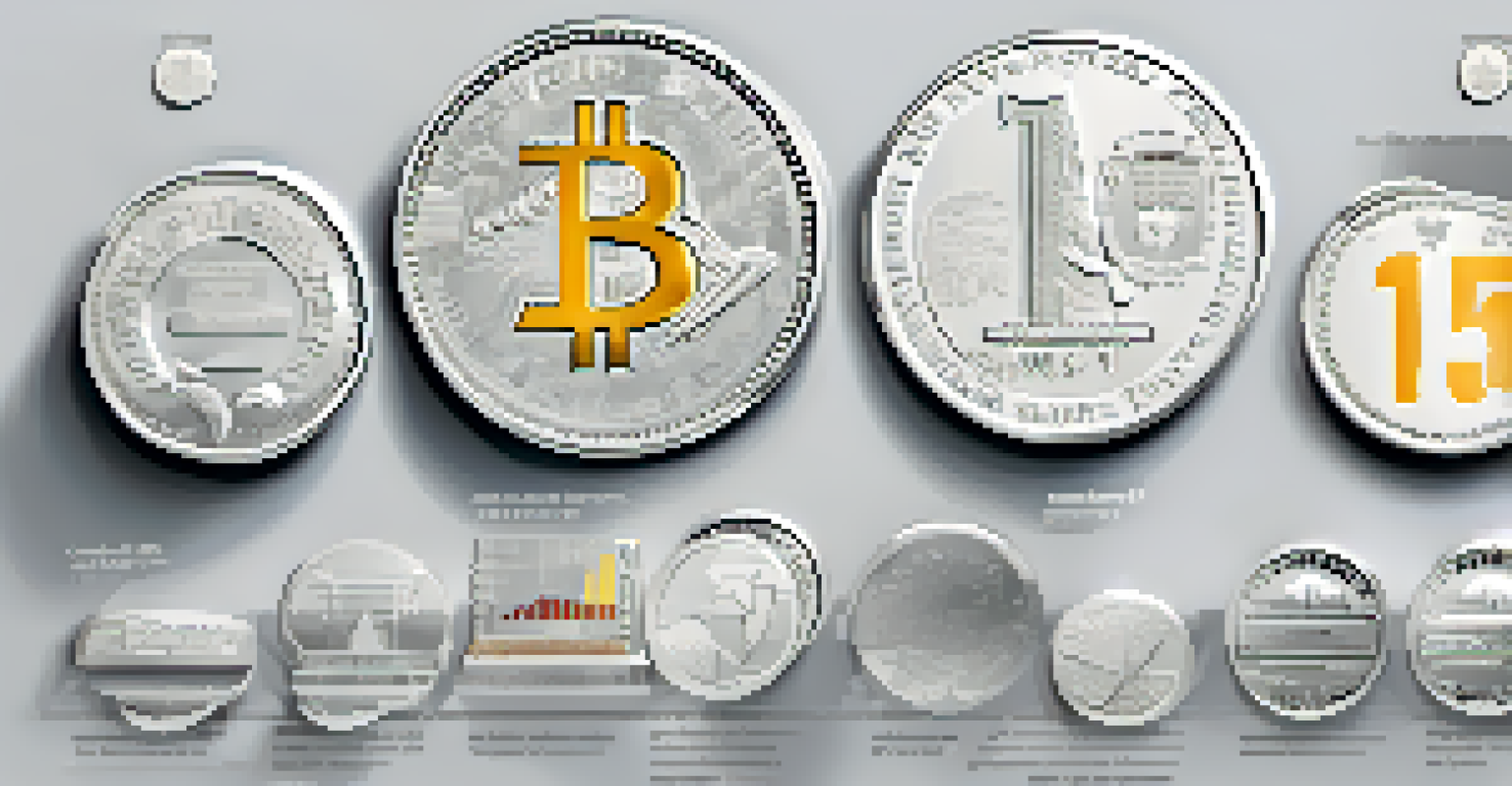Investing in Silver: A Guide to Precious Metal Investment

Understanding Silver as a Precious Metal Investment
Silver has been valued for centuries, not just for its beauty but also for its utility. As a precious metal, it has both intrinsic and market value, making it a popular choice for investors looking to diversify their portfolios. Unlike stocks or bonds, silver offers a tangible asset that can often serve as a hedge against economic downturns.
Silver is a currency that can be used and invested in, and when the economy is faltering, its value can increase.
Investors typically view silver as a safe haven during times of financial instability. Its dual roles in both industry and investment mean that demand can remain strong even when economic conditions fluctuate. This unique position makes silver an attractive addition for those seeking stability in their asset allocation.
Moreover, silver tends to move in tandem with gold, often seen as a more affordable entry point for new investors. While gold might command a higher price, silver allows individuals to invest in precious metals without breaking the bank, making it accessible for a wider range of investors.
The Benefits of Investing in Silver
Investing in silver comes with several benefits that can enhance your financial portfolio. First and foremost, silver is often considered a hedge against inflation. As the cost of living rises, so does the value of silver, helping to preserve your purchasing power.

Additionally, silver has industrial applications that drive demand beyond just investment. With technology and renewable energy sectors increasingly relying on silver, its value can rise based on manufacturing needs, making it a compelling choice for forward-thinking investors.
Silver as a Tangible Investment
Silver offers a tangible asset that can serve as a hedge against economic downturns and is accessible for a wide range of investors.
Finally, silver is relatively easy to buy and sell, whether in physical forms like coins and bars or through ETFs (Exchange-Traded Funds). This liquidity means you can quickly access your investment if needed, adding an extra layer of flexibility to your investment strategy.
Types of Silver Investments Available
When it comes to investing in silver, there are several options to consider. One of the most popular choices is physical silver, which includes coins and bullion bars. These tangible assets can provide a sense of security, as they are not subject to the same risks as digital investments.
Investing in silver is not just about wealth preservation; it's about securing your financial future in uncertain times.
Another option is silver ETFs, which offer a way to invest in silver without the need for physical storage. These funds track the price of silver and can be traded like stocks, providing convenience and liquidity for investors who prefer a hands-off approach.
Finally, there are mining stocks and mutual funds focused on silver-producing companies. These investments can offer leveraged exposure to silver prices, but they also come with the added risks associated with the stock market and operational challenges faced by mining companies.
Factors Influencing Silver Prices
Understanding the factors that influence silver prices is crucial for any investor. Economic conditions, including inflation rates and currency strength, can significantly impact silver's value. When economies struggle or inflation rises, silver often gains appeal as a safe-haven asset.
Supply and demand dynamics also play a critical role in determining silver prices. If industrial demand increases—such as in electronics or solar panels—prices may rise accordingly. Conversely, if supply outpaces demand, silver prices could decline.
Benefits of Silver Investing
Investing in silver can help preserve purchasing power, driven by its industrial applications and easy liquidity.
Additionally, geopolitical events and market speculation can lead to short-term price fluctuations. Keeping an eye on global news and market sentiment can help investors make informed decisions about when to buy or sell silver.
How to Start Investing in Silver
If you're ready to dive into silver investing, the first step is to educate yourself about the different types of silver investments available. Start by determining whether you want to invest in physical silver, ETFs, or mining stocks, based on your risk tolerance and investment goals.
Next, choose a reliable dealer or platform for purchasing silver. For physical silver, look for reputable dealers with positive reviews. If you opt for ETFs or stocks, select a trustworthy brokerage that aligns with your investment strategy.
Finally, consider your overall investment strategy. It's essential to balance your silver investments with other assets to create a diversified portfolio that can withstand market volatility and maximize returns over the long haul.
Storage and Security Considerations for Silver
When investing in physical silver, storage and security become paramount. Unlike digital assets, tangible silver requires safe storage to prevent theft or damage. Consider investing in a safe or using a secure storage facility that specializes in precious metals.
Insurance is another factor to keep in mind. Protecting your silver investments with insurance can provide peace of mind, ensuring that you're covered in case of theft or unforeseen events. Be sure to research policies that specifically cater to precious metals.
Avoiding Common Investment Mistakes
To succeed in silver investing, it's crucial to conduct thorough research, diversify your investments, and avoid emotional decision-making.
If you prefer a more hands-off approach, silver ETFs eliminate the need for storage altogether. With these investments, you can enjoy the benefits of silver exposure without the added responsibilities of physical possession.
Common Mistakes to Avoid When Investing in Silver
Even seasoned investors can make mistakes when it comes to investing in silver. One common pitfall is failing to conduct thorough research before making a purchase. Understanding the market and the factors influencing silver prices is crucial for making informed decisions.
Another mistake is neglecting to diversify your silver investments. Putting all your resources into one type of silver investment can expose you to unnecessary risk. Instead, consider spreading your investments across physical silver, ETFs, and mining stocks to mitigate potential losses.

Lastly, avoid emotional decision-making. The silver market can be volatile, and it’s easy to let fear or excitement dictate your actions. Always stick to your investment strategy and remain focused on your long-term goals for success.